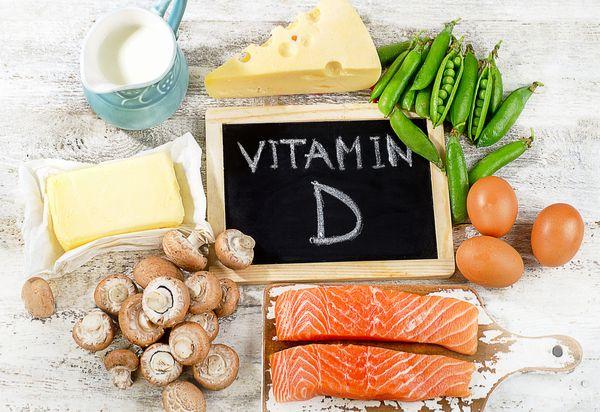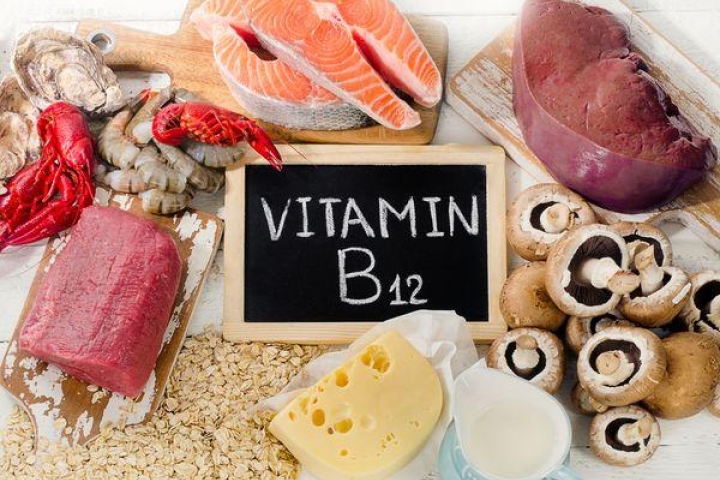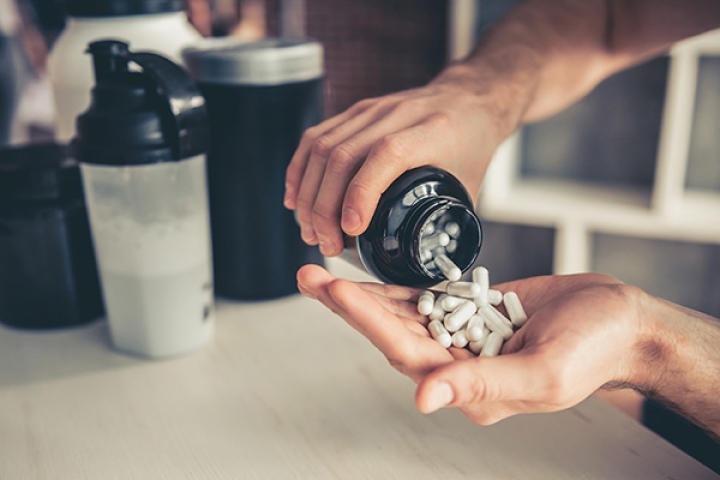Say Hello to the Sunshine Vitamin: Top Foods High in Vitamin D
Vitamin D: The "Sunshine Vitamin"!
Vitamin D has become one of the most popular supplements in recent years, thanks to growing interest from the scientific community, which continues to discover new connections between vitamin D and various health issues.1 In fact, vitamin D has become so well-regarded, it has earned the nickname: the Sunshine Vitamin.
That nickname, however, is both a blessing and a curse. While it is true that the human body produces natural vitamin D when exposed to sunlight, it's easy to overlook that we can also obtain this essential nutrient from our daily diet. We just need to know which foods to keep on hand.
During the winter months, especially for those living in northern climates, the sun's rays are not powerful enough to provide adequate exposure. Consequently, our bodies can't produce enough vitamin D to meet our daily needs. Even in the summer, the widespread use of sunscreen lotions and sprays further diminishes our ability to produce our own vitamin D.
How Much Vitamin D Should I Take?
We need to move beyond the nickname and focus more on meeting our daily nutritional requirements for vitamin D through our diets. With about 88% of the world's population believed to have sub-optimal levels of vitamin D, countries like Finland and Switzerland have started recommending that their citizens take Vitamin D supplements.5 In the United States, the National Institutes of Health (NIH) provide the following daily vitamin D intake recommendations:
- Infants under 12 months: 400 IU
- Children aged 1-13 years: 600 IU
- Teens aged 14-18 years: 600 IU
- Adults aged 19-70 years: 600 IU
- Adults aged 71 and older: 800 IU
- Pregnant and breastfeeding women: 600 IU
What Does Vitamin D Do?
According to the NIH, "Vitamin D...is necessary for health and to maintain strong bones. It assists the body in absorbing calcium (one of bone's main building blocks) from food and supplements."2
Therefore, a deficiency in vitamin D can lead to decreased bone health, particularly bone density. This issue may become more significant with age as the body's natural ability to synthesize vitamin D diminishes. Severe vitamin D deficiency is also being studied for potential links to cardiovascular health, blood pressure problems, and immune system challenges.
Vitamin D is crucial for the health of your bones, teeth, muscles, and organs, and it supports a healthy immune system.
Which Foods Have Vitamin D?
Unlike most minerals and some vitamins, vitamin D presents more of a challenge when it comes to dietary sources. It is not a natural component of most foods. In the standard American diet, fortified foods like milk and cereal are the primary sources of dietary vitamin D. However, there are a few excellent sources, particularly from the sea, that you can easily include in your regular meal plan.
Wild-Caught Fish
Fatty fish caught in the wild are among the best natural sources of vitamin D. Additionally, fatty fish like salmon and mackerel provide the benefit of healthy omega-3 fatty acids.
- Salmon: 3 oz = approx. 400 IU (66% daily value (DV))
- Mackerel: 3 oz = approx. 540 IU (90% DV)
- Sardines: 3 oz = approx. 165 IU (28% DV)
- Canned tuna: 3 oz = approx. 155 IU (26% DV)
- Cod Liver Oil: 1 tsp = approx 440 IU (73% DV)
Beef Liver
Although liver and onions may not be as popular as they once were, beef liver remains a modest source of natural vitamin D. A small 3-ounce serving provides about 40 IU (about 6% DV).
Egg Yolks
While egg yolks do not provide sufficient vitamin D to meet your daily needs on their own, each yolk offers about 40 IU (6% DV). It's another reason to include a healthy breakfast in your routine. Pair it with a glass of milk to increase your vitamin D intake.
Milk
In the United States, almost all milk is fortified with about 400 IU of vitamin D per quart. However, make sure to check the labels, as some powdered milk products may not contain any vitamin D.
Mushrooms
An interesting trivia fact: mushrooms can produce their own vitamin D from sunlight, just like humans.3 However, since mushrooms are typically grown in dark, damp conditions with limited sunlight exposure, look for specific varieties and brands cultivated under ultraviolet light to enhance natural vitamin D production.
Breakfast Cereals
Like milk, most breakfast cereals are fortified with vitamins and minerals, including vitamin D. Many Americans and their children begin their day with cereal, so manufacturers add essential nutrients to provide a helpful boost.
To maximize the vitamin D from your bowl of cereal, include fortified milk. For those with dietary sensitivities, options like almond milk and goat milk are often enriched with vitamin D.
How to Get More Vitamin D
As demonstrated, unless they are fortified or enriched, most foods are not optimal sources of vitamin D. Therefore, it's important to pay close attention (especially during the winter) to what you put on your plate to maintain adequate levels. Read your food labels and consider a vitamin D supplement if you find you're not getting enough to meet your daily requirements.
For example, one serving of BubbForest Health’s High-Potency Vitamin D-3 supplement provides 1,000 IU, which is 250% of the adult daily value.
A daily vitamin D supplement can help eliminate the guesswork in determining if you are getting enough vitamin D. Furthermore, doctors and nutritionists often recommend a higher daily intake of vitamin D than the U.S. Food & Drug Administration (FDA), especially if you are at risk for vitamin D deficiency, exhibit symptoms of vitamin D deficiency, or have been tested for vitamin D deficiency.
The Vitamin D Council, an organization dedicated to raising awareness about vitamin D and vitamin D deficiency, recommends that the average adult supplement with 5,000 IU of vitamin D3 daily.4 Since recommended daily intakes vary widely between organizations and healthcare professionals, it's best to consult your physician or nutritionist to determine the best daily intake of vitamin D for your optimal health.
About Amy Sunderman, MS, RD
Amy is a registered dietitian, nutritionist, and author with over 20 years of experience in the supplement industry. Amy is passionate about dietary supplements and the health benefits they offer. She enjoys working to find novel nutritional ingredients with robust clinical research behind them to drive innovation and provide health-promoting products to consumers.
*These statements have not been evaluated by the Food and Drug Administration. These products are not intended to diagnose, treat, cure, or prevent any disease.
Sources
1. 10 Illnesses Linked to Vitamin D Deficiency. Everyday Health. Read source
2. Vitamin D. National Institutes of Health. Read source
3. Vitamin D in Mushrooms. Mushroom Council. Read source
4. Vitamin D. MedLine Plus. Read source
5. Bridging the Vitamin D Gap. IADSA. Read source





Leave a comment